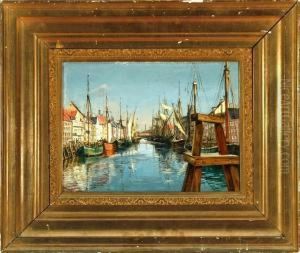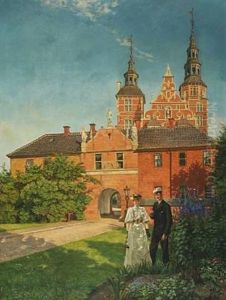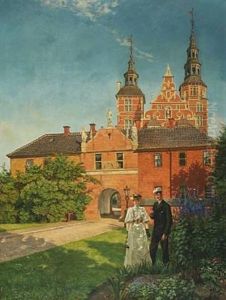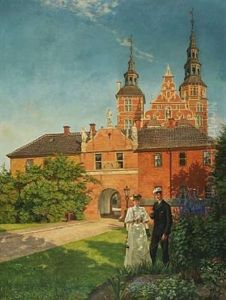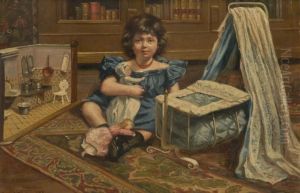Svend Ronne Paintings
Svend Ronne was a Danish artist known for his contributions to painting and graphic design. He was born in 1913 in Denmark and was part of a generation of artists who came to prominence in the years surrounding World War II. Not as internationally recognized as some of his contemporaries, Ronne's work nonetheless reflects the varied influences and artistic shifts that took place throughout the 20th century, particularly in the Nordic countries.
Educated in the arts during a time of great change and experimentation, Ronne was exposed to both traditional and modernist techniques. His early work was shaped by the prevailing trends of European art, including Expressionism and Surrealism, which were popular among avant-garde artists during the interwar period. He developed a style characterized by a strong sense of color and form, often focusing on landscapes, still lifes, and occasionally portraits.
During World War II, Denmark was occupied by Germany, and this period was a difficult one for Danish artists, many of whom were restricted in their ability to exhibit or sell their work. Despite these challenges, Ronne continued to develop his craft, and his post-war output reflects a continued engagement with contemporary movements, including Abstract Expressionism. Like many artists of his time, he was searching for a means of expression that could encapsulate the experiences of the era, including the trauma of war and the hope of post-war reconstruction.
In the 1950s and 1960s, Ronne's work began to gain more recognition within Denmark, and he participated in several group and solo exhibitions. His graphic design work also became more widely known, and he contributed to the visual culture of the period through poster design, book illustrations, and other forms of applied art. This aspect of his career reflects the broader mid-century trend of blurring the lines between fine art and commercial art.
Svend Ronne passed away in 1992, leaving behind a body of work that, while perhaps not as well-known outside of Denmark, offers a window into the artistic evolution of the 20th century in the Nordic region. His paintings and graphic designs remain part of the Danish cultural heritage and are studied by those interested in the diverse art movements that flourished during his lifetime.
